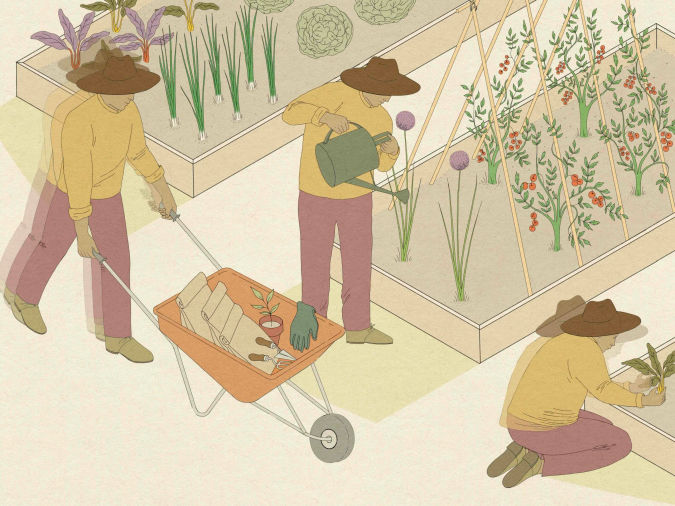As we age, one of the most significant decisions we face is where to live.
While many older adults prefer to remain in the comfort of their homes, studies show that community living can provide the support needed for people to live more independently, longer. It’s important that families carefully evaluate which option can best provide both independence and quality of life.
The Realities of Aging in Place
For many older adults, the idea of staying in a familiar environment surrounded by cherished belongings and memories is appealing. However, continuing to live in a long-time home comes with both advantages and disadvantages.
Advantages
- Comfort and familiarity: Remaining in a familiar home can provide older adults with emotional security and avoid the worries that may accompany moving.
- Maintaining routines: Continuing long-established daily routines can promote a sense of independence and control over an individual’s environment.
- Proximity to community: Older adults may already have established relationships with their neighbors and local services, which can bring a sense of comfort and stability.
- Cost considerations: For those who don’t require home modifications or in-home care, remaining in a house that’s been paid off may be more affordable than moving.
Disadvantages
- Home modifications: Many homes are not designed to accommodate aging adults, and necessary modifications such as ramps, grab bars or stairlifts can be costly.
- Increased risk of isolation: As a person’s mobility decreases, staying socially connected becomes more difficult, which can lead to social isolation and loneliness. The National Institute on Aging shows these factors have been linked to an increased risk of depression, anxiety, high blood pressure, heart disease, stroke and dementia.
- Safety concerns: Without proper home modifications, everyday tasks such as cooking, cleaning and bathing can pose safety risks, increasing the likelihood of accidents.
- Limited access to health care: Older adults who remain in their homes but depend on others for transportation may neglect timely medical care, risking an escalation of minor health concerns.
- Caregiver burnout: Family members often take on caregiving roles, which can lead to emotional and physical strain over time.
Senior Living Communities: An Empowering Alternative
It’s a common misconception that moving into a senior living community limits a person’s independence. In fact, these communities are specially designed to foster autonomy while offering essential support to enhance overall quality of life. Here are some of the key benefits senior living communities offer.
- Comfort and convenience: Life is simplified, with housekeeping, meals and maintenance handled by staff, while utilities and transportation are often included in the monthly rate.
- Opportunities for social connection: A variety of events, including exercise classes, group outings and volunteer opportunities, help older adults stay engaged and feel fulfilled. Research published in Nature shows that having a sense of purpose contributes to longevity by supporting a stronger immune system and improving mental well-being.
- Healthier mind and body: Easy access to health care, nutritious meals and fitness programs promote better physical and mental well-being. A study by the National Investment Center for Seniors Housing and Care (NIC) found that older adults in senior living communities tend to live longer and healthier lives compared to those who live alone.
- 24/7 care access: Senior living offers a sense of safety with round-the-clock support, which may include personal assistance, medication management and specialized services for memory-related conditions like dementia.
- Family relief: Caregivers enjoy a sense of relief after a family member moves to senior living. Because communities tend to the many duties of caregiving, families can focus on spending quality time together rather than managing to-dos.
Supporting Independence and Enhancing Quality of Life
Making the best decision between continuing to live in a familiar environment and moving to a senior living community depends on factors like health, mobility and social needs. While “aging in place” often refers to staying in the comfort of a long-time home, it can also refer to choosing a community that will accommodate changing care needs over time – and may even help prevent them. With access to care, social activities and a community of peers, families often find senior living can promote independence and provide an improved quality of life.
You might also like
Want to learn more about life at Atria Senior Living?


